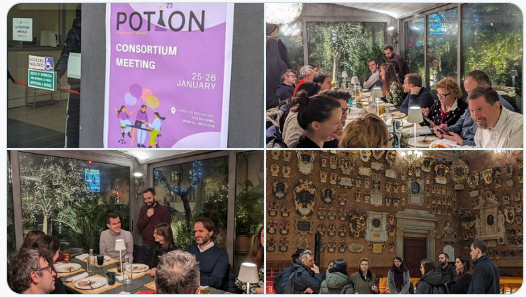April 2024
Research highlights
How does smell affect the way we perceive faces?
The ability to process facial expressions is essential for understanding how others feel and think. In real-life situations, this ability is not only based on the visual system but also on contextual information from other senses. Olfactory stimuli have a significant impact on how we perceive the pleasantness of faces. Previous studies have demonstrated that the emotional value of contextual smells can influence how we recognize facial expressions and how we rate faces subjectively.
A recent paper published by the POTION partner from the University of Pisa sheds light on this intriguing question using a novel combination of methods. The paper, published in Journal of Neural Engineering, integrates electrodermal activity (EDA) analysis and dynamic causal modeling to investigate neural dynamics between visual and olfactory modalities during face perception.
The research focuses on understanding how hedonic contextual olfactory stimuli influence the processing of neutral faces in terms of sympathetic response, event-related potentials, and effective connectivity analysis. The study acquired the EDA and EEG signals from 22 healthy volunteers performing a passive visual stimulation task with neutral faces while being exposed to pleasant, neutral and unpleasant odours.
The findings show that stimuli eliciting sympathetic electrodermal activity (EDA) responses are linked to a more negative N170 amplitude, indicating heightened arousal in response to faces. The N170 is a negative event-related potential (ERP) component observed in brain activity, commonly associated with facial processing in humans and often utilized as a marker for face processing in cognitive neuroscience research.
The study further illustrates that unpleasant odours increase forward connections in brain regions that process variable facial features, while sympathetic responses reduce these connections and increase backward connections related to face recognition. In general, the study implies that unpleasant smells may improve the understanding of emotional expressions, while faces that cause sympathetic arousal focus on identity processing.
The paper highlights the significant impact of contextual hedonic odours and sympathetic arousal on visual processing during face perception. Looking ahead, future research will incorporate sympathetic nervous system activity (SMNA) dynamics into the connectivity network to examine causal interactions between EDA and EEG. This will further deepen our understanding of the role of sympathetic arousal in visual-odour multimodal integration.
Partner meeting: Padova, Italy
The POTION consortium had a productive project meeting in Padova, Italy!
Big thank you to the partners at the University of Padova for your hospitality and for arranging a visit to the University to learn more about its history and impact on higher education.
The opportunity to engage with colleagues, exchange ideas, and explore the vibrant academic environment at Padova was truly special.
Activity highlights from the POTION Team
A randomised controlled trial of Synthetic sweat
The POTION partners are busy conducting the RCT study to test the therapeutic effect of articially synthesized human sweat on social anxiety disorder. The study is taking place at the University of Padua and aims to recruit 120 women aged 18 to 35 scoring 30 or above on the Liebowitz Social Anxiety Scale (LSAS). The study uses a cocktail of synthetic fear sweat developed by the POTION partner at the University of Pisa, where chemical compounds believed to be associated with human fear chemosignals have been identified. These compounds have been incorporated into a reference sweat solution derived from artificial apocrine sweat.
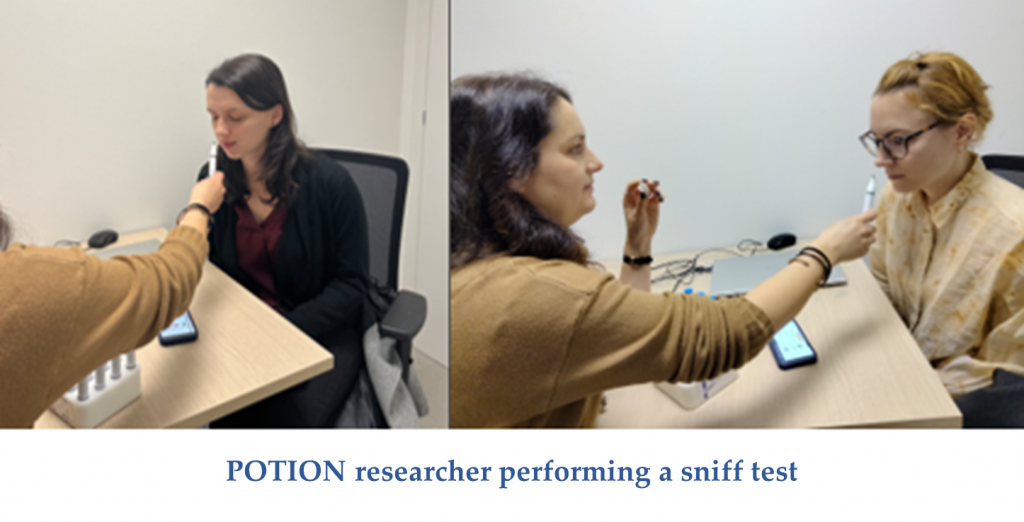
Building on the previous results, the study will concentrate on the fear chemosignals as these seemed to have a stronger effect in terms of increasing the anxiety reducing effects of the mindfulness sessions.
Briefly, the participants will be randomly assigned to either an intervention group (mindfulness + fear odour) or an active control group (mindfulness + clean air). Each group will engage in 25 minutes of mindfulness meditation while exposed to either fear odour or clean air delivered by the POTION Delivery System developed by the SRA instrument.
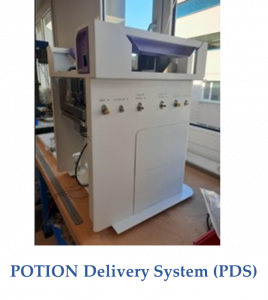
The primary outcome measure will assess changes in anxiety symptoms, supplemented by evaluations of electrodermal activity and heart rate among other variables.
We expect to have the results of the clinical trial by Q4 of 2024, so stay tuned!
Virtual Reality social scenarios: a Cyberball study
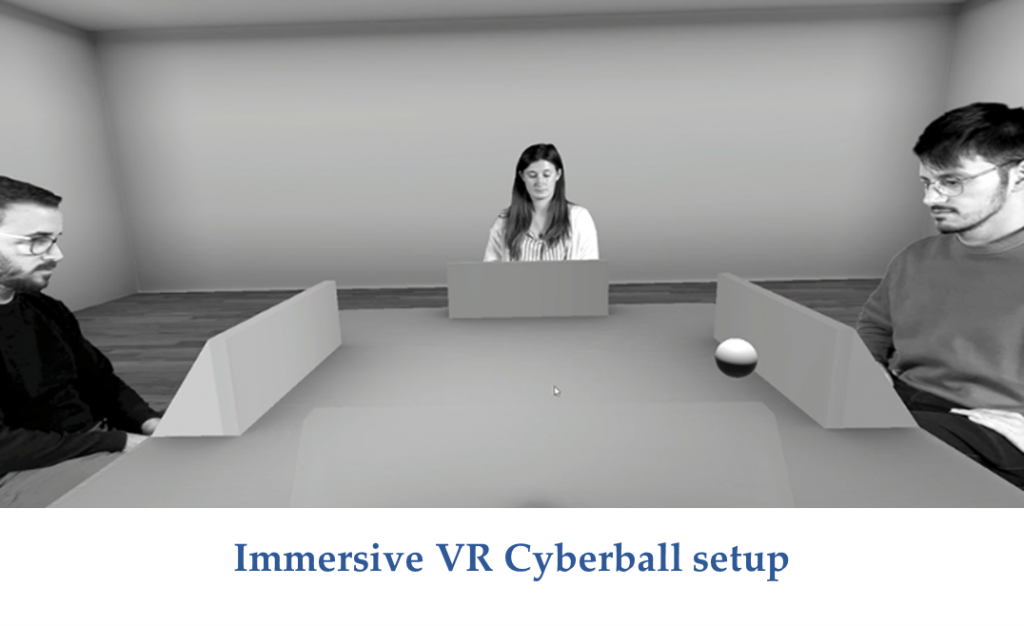
To evaluate the effect of human emotional chemosiganls on social scenario, POTION partners at University of Valencia lead on the development of a VR version of the Cyberball game. Cyberball is a widely used experimental paradigm in social psychology to study social exclusion and inclusion.
The participants of the POTION VR Cyberball study were engaged in the Cyberball game while being exposed to the human emotional chemosignals delivered through the POTION Delivery Systems. The effect of the human emotional chemosiganls on social inclusion will be evaluated based on the frequency of the ball being passed to the excluded player.
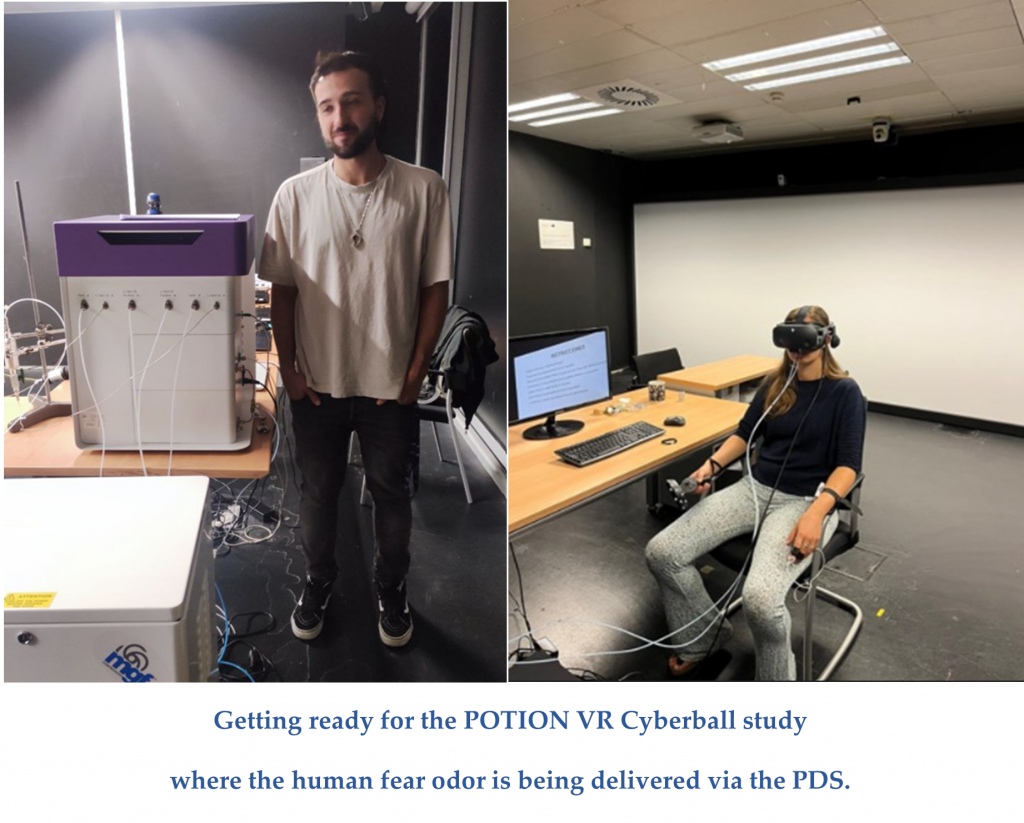
Press release
Dr Emma Eliasson and Prof. Claudio Gentili’s shared their insights in the latest article featured on Springer Nature to discuss the ongoing clinical trials to investigate the affect of body odours and mindfulness treatment for social anxiety. The Springer Nature article can be found here. More information about the POTION clinical trial can be found on ISRCTN
Download the Pdf version here: POTION newsletter April 2024
Recent Publications
- Elisa Dal Bò, Cinzia Cecchetto, Alejandro Callara et al. Emotion perception through the nose: How olfactory emotional cues modulate the perception of neutral facial expressions in affective disorders, 10 January 2024, PREPRINT (Version 1) available at Research Square https://doi.org/10.21203/rs.3.rs-3721389/v1
- Callara, A. L., Rho, G., Condino, S., Ferrari, V., Scilingo, E. P., & Greco, A. (2024). Behavioral, Peripheral, and Central Neural Correlates of Augmented Reality Guidance of Manual Tasks. IEEE Transactions on Human-Machine Systems. doi: 10.1109/THMS.2024.3354413.
- Rho G, Callara AL, Bossi F, Ognibene D, Cecchetto C, Lomonaco T, Scilingo EP, Greco A. Combining electrodermal activity analysis and dynamic causal modeling to investigate the visual-odor multimodal integration during face perception. J Neural Eng. 2024 Feb 9;21(1). doi: 10.1088/1741-2552/ad2403. PMID: 38290158.



